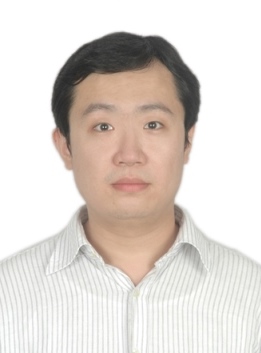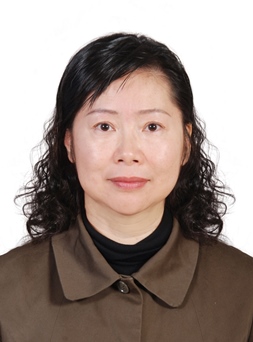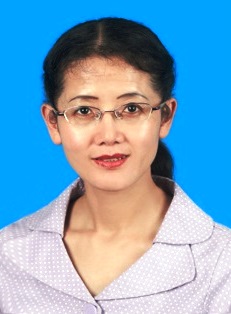|
|
Invited Speakers
| Title:
Ceramic UF membrane for algal-rich water treatment: Effectiveness and membrane fouling control
|
|
|

|
Prof. Yi TAO
Tsinghua-Kangda Research Institute of Environmental Nano-Engineering & Technology
Graduate School at Shenzhen, Tsinghua University
Shenzhen 518055, Guangdong, China;
School of Environment, Tsinghua University
Beijing 100084, China
Abstract
The presence of seasonal algal blooms with harmful algae-derived organic matters threatens threaten the quality of water supply. Ultrafiltration (UF) has been applied for the treatment of cyanobacteria-rich water with the advantages of complete removal of algal cells, less cell breakage and less inclusion release. However, the application of UF for the treatment of algal-rich water is considerably constrained by severe membrane fouling caused by algal cells and algae-derived organic matters (AOM). The hybrid process of in-situ ozonation with ceramic ultrafiltration membrane was proposed for the treatment of algal-rich water with effective removal of algal cells and mitigation of membrane fouling. The mechanism of membrane fouling mitigation with in-situ ozonation was systematically investigated from the perspective of cake layer, gel layer and membrane pore blocking. The results showed that combination of algal cells and EOM had a synergetic membrane fouling effect. The resistance of cake layer was the highest. In-situ ozonation treatment can effectively mitigate membrane fouling. Transmembrane pressure was reduced by 75.8% with in-situ ozonation at a dosage of 1 mg/L. In-situ ozonation resulted in formation of a more porous and thinner cake layer due to the disintegration of extracellular organic matters that attached on the algal surface. Besides, the portion of very high molecular weight biopolymers (around 100 kDa) and the hydrophobic fraction of algae-derived organic matters, the main component intercepted by the ceramic membrane, were reduced with in-situ ozonation and thus leaded to less severe gel layer fouling. Furthermore, in-situ ozonation induced the accelerated organics degradation within the ceramic membrane pores, alleviating the pore blocking.
|
|
| Title:
Toxicology study of Karenia mikimotoi, a fish and shellfish killing species in China
|
|
|

|
Dr. Tian YAN
Institute of Oceanology
Chinese Academy of Sciences
Qingdao, P.R. China, 266071
Abstract
Large-scale Karenia mikimotoi blooms have occurred frequently and severely damaged aquaculture in China. K. mikimotoi was frequently associated with severe kills of farmed fish as the hemolytic toxin producer in many coastal places along the world. K. mikimotoi was found to have short-term lethal effect to fish due to gill impairments, and various detrimental impacts to different organisms such as copepod Clanus sinicus and rotifer Brachionus plicatilis, as well as mammalian cell lines in our previous studies. Moreover Karenia mikimotoi is a shellfish killing species. The outbreak of Karenia mikimotoi bloom in 2012 caused massive mortality of abalone, Haliotis discus hannai, with more than 2 billion RMB loss in Fujian Province in China. The mechanisms of this Fujian strain K. mikimotoi affecting abalone Haliotis discus hannai were investigated. Under laboratory conditions, the effects of K. mikimotoi on the survival of the abalone at different environmental conditions were examined. It was found that the rapid mortalities of abalones could be caused by the detrimental effects of K. mikimotoi at suitable environmental conditions with aeration, but without aeration the low DO made the toxic effects stronger. Exposure to K. mikimotoi also caused the shrink and deformation of afferent and efferent branchial vessel in the gill, and also induced the disruption of the gill lamella. The major protein enzyme ( including Na+-K+-ATP, Ca2+-Mg2+-ATP) in the gill, and antioxidant enzymes (SOD and CAT) also showed inhibited activities. In addition, the toxic effects of two strains of K. mikimotoi on the abalones were compared. The results indicated that K. mikimotoi strain from Fujian, showed severe toxicity effects on abalones, but weak in another strain from South China Sea. However, the concentration of hemolytic toxin was similar in both strains, indicating that the toxic effects of K. mikimotoi on abalones originated from some more active substances.
|
|
| Title:
Metabolic engineering of microalgae for boosting neutral lipid accumulation
|
|
|

|
Prof. Hong-Ye LI
Key Laboratory of Eutrophication and
Red Tide Prevention of Guangdong Higher Education Institutes
College of Life Science
Jinan University, Guangzhou 510632, China
Abstract
Marine microalgae present distinct metabolic pathways from terrestrial organisms due to their unique living environment and difficulty to study. To obtain fast growing oil-rich microalgal strains has been urgently demanded for microalgal biofuel. Malic enzyme (ME), which is involved in pyruvate metabolism and carbon fixation, was first characterized in microalgae here. Overexpression of the malic enzyme gene (PtME) of marine microalga Phaeodactylum tricornutum significantly enhanced the expression of PtME and its enzymatic activity in transgenic P. tricornutum. The total lipid content in transgenic cells markedly increased by 2.5-fold and reached a record 57.8% of dry cell weight with a similar growth rate to wild type, thus keeping a high biomass. The neutral lipid content was further increased by 31% under nitrogen-deprivation treatment, still 66% higher than that of wild type. Transgenic microalgae cells exhibited obvious morphological changes, as the cells were shorter and thicker and contained larger oil bodies. Immuno-electron microscopy targeted PtME to the mitochondrion. This study markedly increased the oil content in microalgae, suggesting a new route for developing ideal microalgal strains for the high-value utilization of microalgae.
|
|
| Title:
Inactivation of Invasive Marine Species in the Process of Conveying Ballast Water Using hydroxyl radical (-OH) Based on a Strong Ionization Discharge
|
|
|

|
Prof. Min-Dong BAI
Key Laboratory of Education Ministry for Coastal and Wetland Ecosystems
Fujian Collaborative Innovation Center for Exploitation and
Utilization of Marine Biological Resources
Xiamen University, Xiamen, Fujian 361005, China
Abstract
In this paper, invasive marine species in medium-salinity ballast water were inactivated using hydroxyl radical generated from a strong ionization discharge. The hydroxyl radical is determined by the concentration of oxygen active species combined with the effects of water jet cavitation. The results indicated that the hydroxyl radical concentration reached 7.62 μM, within 1s, which is faster and higher than in conventional AOP methods. In a pilot-scale hydroxyl radical ballast water system with a capacity of 10m3/h, algae were inactivated when CT value was 0.12 mg·min/L with a contact time only 6s, the immediate impacts of cells integrity and photosynthetic capacity were investigated. Therefore, the hydroxyl radical treatment could be completed during the process of conveying the ballast water. In addition, the concentrations of relevant oxidation by-products, such as trihalomethanes (THMs), haloacetic acids (HAAs), and bromate, were less than that required by the World Health Organization’s drinking water standards, which suggest that the discharged ballast water posed no risks to the oceanic environment. Nevertheless, for conventional ozonation and electrolysis methods, the ballast water should be treated only in the treated tanks during the ship’s voyageand form higher level by-products.
|
|
|

